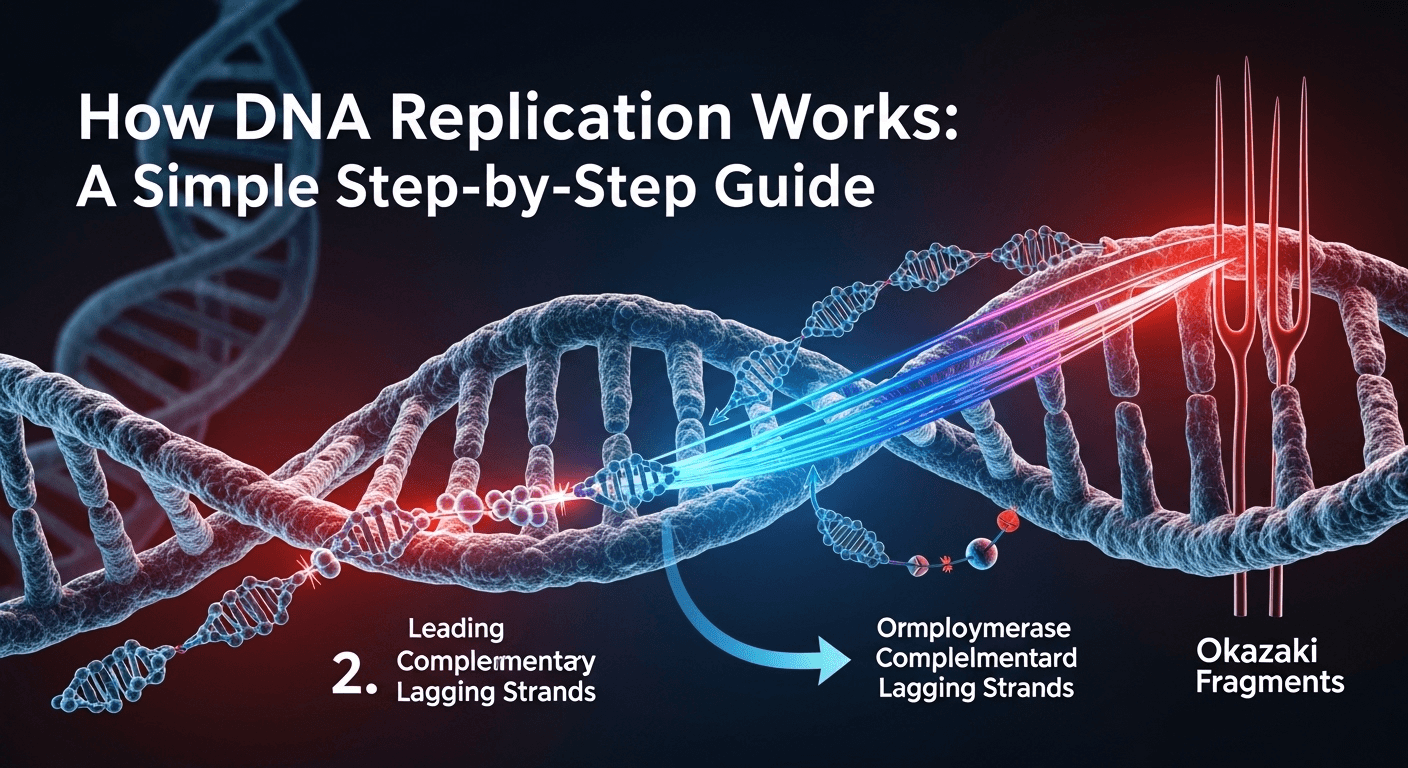Every living organism, from the smallest bacterium to the largest blue whale, carries a microscopic instruction manual in nearly every one of its cells. This manual, known as DNA, dictates everything from eye color to how our bodies fight off disease. But for life to continue, for cells to divide, for organisms to grow and repair themselves, this intricate manual must be copied with incredible precision. This fundamental process is called DNA replication. If you've ever wondered how does dna replication work, you've come to the right place. This guide will break down this complex biological marvel into simple, understandable steps, revealing the elegant molecular machinery that makes life possible. What is DNA and Why Does It Need to Replicate? At its core, Deoxyribonucleic Acid (DNA) is a molecule that contains the genetic code for an organism. It's often visualized as a twisted ladder, a structure called a double helix. The "rungs" of this ladder are made of pairs of four chemical bases: Adenine (A), Guanine (G), Cytosine (C), and Thymine (T). A crucial rule governs these pairings: Adenine always pairs with Thymine (A-T), and Cytosine always pairs with Guanine (C-G). This specific pairing is the key to DNA's ability to be copied accurately. The sequence of these bases along the ladder's "sides" forms the genes that provide instructions for building and maintaining an organism. The need for replication is intrinsically tied to the life cycle of cells and organisms. Consider this: you started as a single cell, which then divided into two, then four, and so on, until you became the complex organism you are today, made of trillions of cells. Every time a cell divides (a process called mitosis), both new daughter cells need a complete and identical copy of the original DNA instruction manual. Without DNA replication, cell division would be impossible. This process is also vital for growth, repairing damaged tissues (like when you heal from a cut), and for creating sex cells (gametes) for reproduction. The genius of DNA replication lies in its semi-conservative nature. This term, which sounds complex, describes a beautifully simple concept. When a DNA molecule replicates, it doesn't create a brand-new copy from scratch. Instead, the double helix "unzips" down the middle, and each of the two original strands serves as a template for building a new, complementary strand. The result is two new DNA molecules, each consisting of one old (parental) strand and one newly synthesized strand. This method ensures an extremely high degree of fidelity, minimizing errors and preserving the genetic code across generations of cells. The Key Players: Enzymes and Proteins in DNA Replication DNA replication isn't a magical event; it's a highly coordinated process orchestrated by a team of specialized proteins and enzymes. These molecules are the microscopic workers on the cellular assembly line, each with a specific and vital job. An enzyme is a biological catalyst—it speeds up chemical reactions without being consumed in the process. In the context of DNA replication, these enzymes perform tasks like unzipping, building, and proofreading with astonishing speed and accuracy. Understanding the main players is essential to understanding the entire process. While many proteins are involved, a few key enzymes perform the most critical functions. They work together in a complex called the replisome, a "replication machine" that moves along the DNA. Think of them as a highly efficient construction crew, each member knowing their precise role and timing. Here are the star members of the DNA replication team: Helicase: The "Unzipper." This enzyme's primary job is to break the hydrogen bonds holding the two DNA strands together, unwinding the double helix and creating a Y-shaped structure known as the replication fork. Primase: The "Primer." DNA's main builder enzyme can't start a new chain from scratch. Primase solves this by creating a short RNA (Ribonucleic Acid) sequence called a primer. This primer acts as a starting block for the DNA synthesis to begin. DNA Polymerase: The "Master Builder." This is the main enzyme responsible for synthesizing new DNA. It "reads" the template strand and adds complementary nucleotides (A, T, C, or G) to create the new strand. It also has a crucial proofreading function, like a backspace key, to correct errors. Ligase: The "Gluer." As we'll see, one of the new DNA strands is built in small, separate fragments. DNA ligase is the enzyme that joins these fragments together, sealing the gaps to create a continuous, unbroken strand. Single-Strand Binding (SSB) Proteins: The "Stabilizers." Once helicase unzips the DNA, these proteins bind to the separated single strands to prevent them from snapping back together before they can be copied. The Main Event: The Three Stages of DNA Replication The entire process of copying DNA can be neatly organized into three distinct stages: Initiation, Elongation, and Termination. These stages describe how the process starts, how the new DNA is built, and how it all comes to a clean finish. This step-by-step progression ensures that the entire genome is copied completely and only once per cell cycle. Think of it like building a massive two-lane highway. Initiation is the surveying and site-clearing phase. Elongation is the actual paving of the two new lanes. Termination is the final cleanup, sign-posting, and opening the highway for traffic. Each stage involves our key enzymes working in perfect harmony at the replication fork. Initiation: Unzipping the Double Helix Replication doesn't just start at a random point on the DNA molecule. It begins at specific locations called origins of replication. In simpler organisms like bacteria, there might be just one origin on their circular chromosome. In complex eukaryotes like humans, with much larger linear chromosomes, there are thousands of origins. Using multiple origins allows the vast human genome to be copied in a matter of hours, rather than weeks. At these origins, initiator proteins bind to the DNA, signaling that it's time to start replication. Once the origin is identified, the enzyme Helicase gets to work. It binds to the DNA and begins to move along





